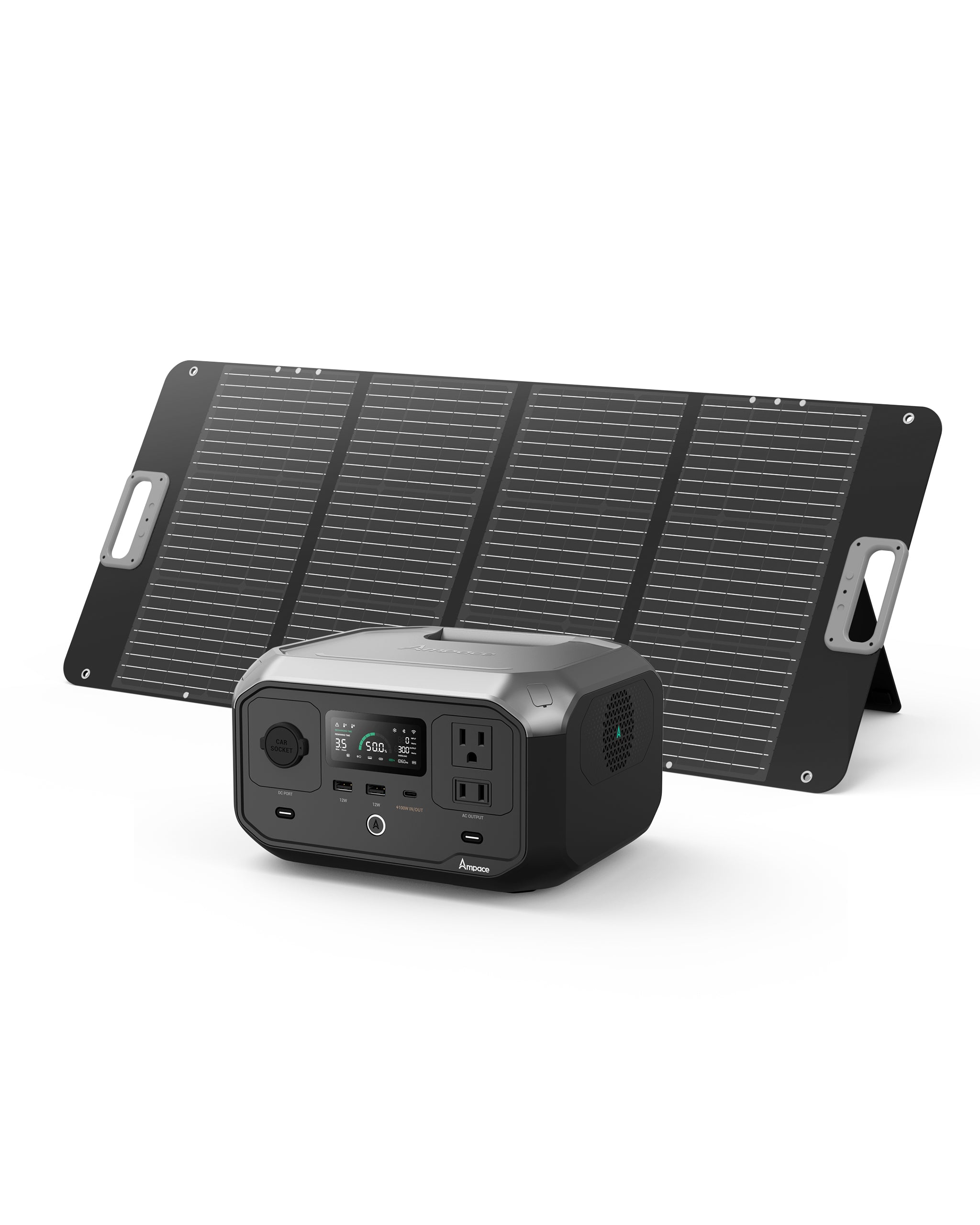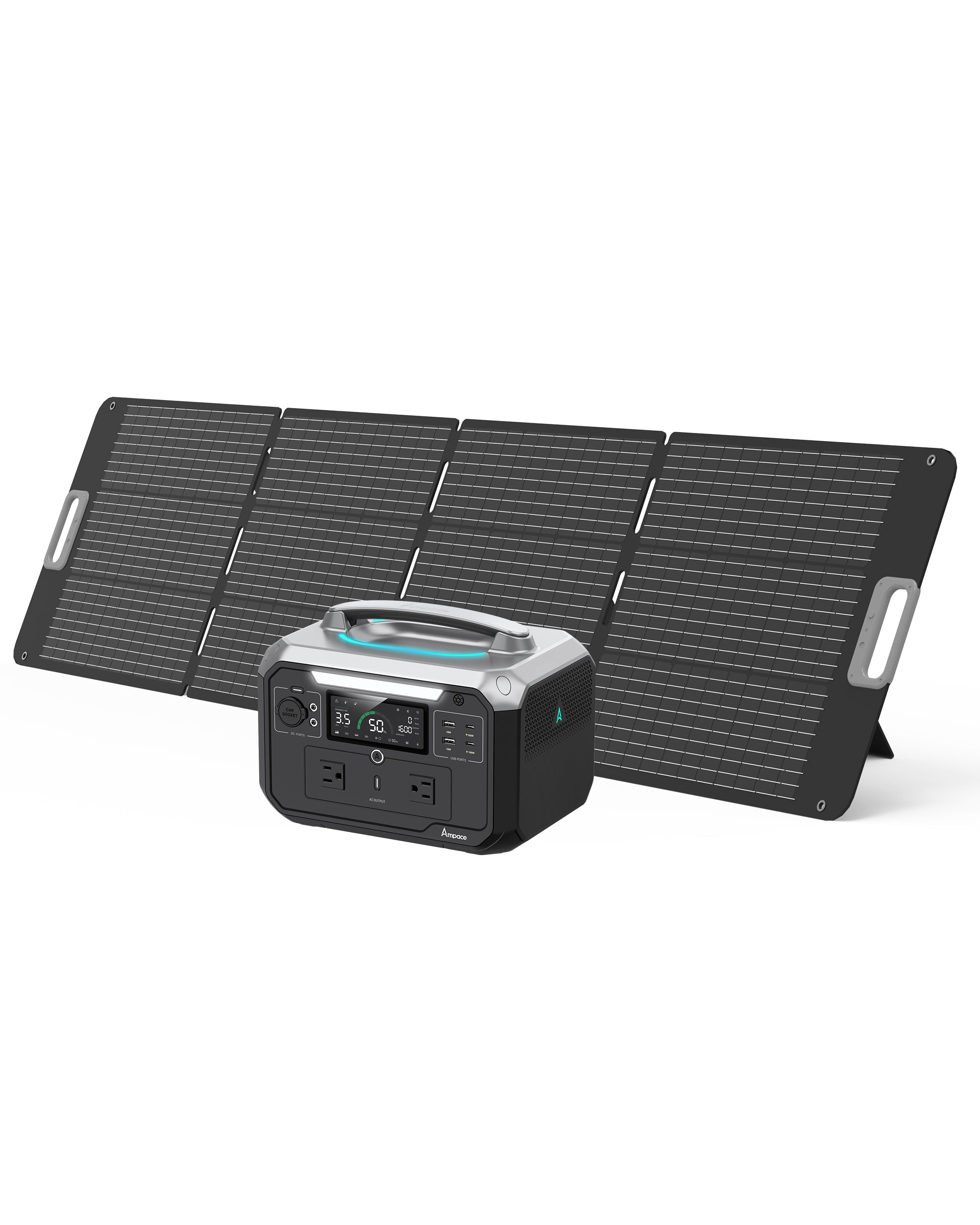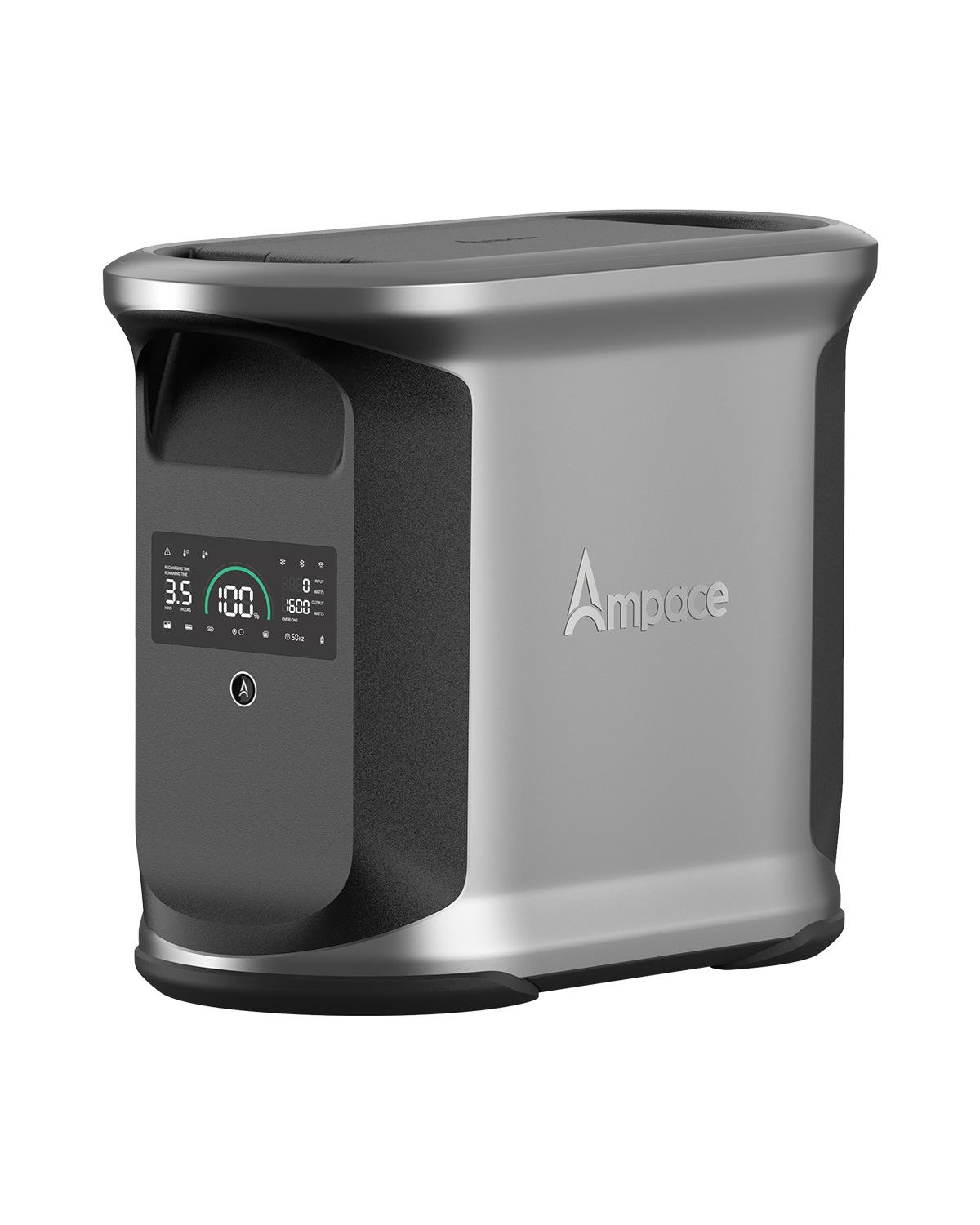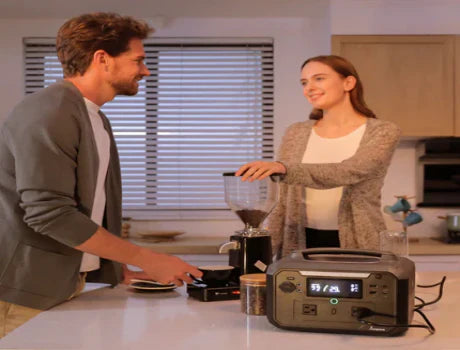How Many amps does a MicroWave Use

Table of Contents
Microwaves are typically among the most power-hungry household appliances. Most home microwaves draw between 5 and 12.5 amps at 120 volts, with startup surge currents potentially reaching up to twice that amount. To support such high-powered devices, a power system capable of handling both high surge and continuous power is required—such as a dedicated circuit or a portable power station.
Household microwaves usually need 600 to 1500 watts of running power, while the surge power at startup can reach 1200 to 3000 watts. Therefore, the power system must have sufficient capacity and stability to prevent power interruptions or equipment damage. Additionally, using a dedicated 15- or 20-amp circuit can help avoid circuit overload, and for backup power, it's important to choose a device that supports high surge power—such as the Ampace portable power station.
What Are Microwave Amps?
Microwave amps refer to the electrical current (measured in amperes) that a microwave oven draws from a power source to operate its components, primarily the magnetron, which generates microwaves for cooking. The ampere (amp) is a unit of electrical current, indicating the "flow rate" of electricity through the appliance. Knowing a microwave's amp draw is essential to ensure it operates safely on your home's electrical circuit, especially when paired with other appliances, and to select appropriate backup power solutions.
Microwaves typically require significant power, especially during startup, due to the energy needed to initiate the magnetron and other components. Understanding this helps prevent circuit overloads, tripped breakers, or electrical hazards, particularly in homes with limited electrical capacity or when using alternative power sources like solar generators.

Definitions of Amps, Volts, Watts, and Running Watts
To fully grasp microwave power consumption, it’s important to understand the following electrical terms:
Amps (Amperes)
Amps measure the rate of electrical current flowing through an appliance. Think of it as the volume of electricity being used. For a microwave, the amp draw reflects how much current is needed to power the magnetron, fan, and control systems. The formula to calculate amps is:
Amps (A) = Watts (W) ÷ Volts (V).
For example, a 1000W microwave operating at 120V draws approximately 8.33 amps (1000 ÷ 120 = 8.33).
Volts
Volts measure the electrical potential difference, or the "pressure" that drives current through a circuit. In North America, standard household microwaves typically operate at 120 volts, while some commercial models may use 220–240 volts in other regions.
Watts: Watts measure the rate of power consumption or production, indicating how much energy an appliance uses per second. For microwaves, wattage reflects the total power needed to run the appliance. You can calculate watts using:
Watts (W) = Volts (V) × Amps (A).
Running Watts
Running watts refer to the continuous power required to keep the microwave operating after startup. Microwaves often have a brief surge (inrush current) when the magnetron starts, which can be 1.5 to 2 times the running wattage. For example, a microwave rated at 1000 running watts may require up to 2000 watts momentarily during startup.
These terms are critical for calculating a microwave’s power needs, ensuring proper circuit allocation, and selecting a suitable backup power source.

Amperes and Wattage of Different Types of Microwaves
Microwave ovens vary in size, design, and features, which directly affect their power consumption. Below is a breakdown of typical amperage and wattage for different types of microwaves at 120 volts (standard U.S. household voltage):
-
Compact/Countertop Microwaves (600–800W):
These smaller models, often used in dorms, offices, or small kitchens, consume 600–800 watts. At 120V, they draw approximately 5–6.7 amps during operation. Startup surges may require up to 10–13.4 amps. These microwaves are ideal for light use, such as reheating meals or making popcorn. -
Standard Household Microwaves (900–1200W):
Common in most homes, these microwaves use 900–1200 watts, drawing 7.5–10 amps during normal operation. Startup surges can reach 15–20 amps. They offer a balance of power and versatility for everyday cooking tasks. -
High-Power/Convection Microwaves (1200–1500W):
These advanced models, often with convection or grilling features, consume 1200–1500 watts, equating to 10–12.5 amps at 120V. Startup surges may demand 20–25 amps. They are suitable for larger households or those requiring additional cooking functions. -
Commercial Microwaves (1800–2500W):
Used in restaurants or cafeterias, these heavy-duty models consume 1800–2500 watts, drawing 15–20.8 amps during operation. Startup surges can exceed 30 amps, often requiring a dedicated 20-amp circuit or higher. These microwaves are designed for frequent, high-volume use.
|
Microwave Type |
Wattage Range |
Running Amps (at 120V) |
Startup Surge Amps |
Typical Use Case |
|
Compact/Countertop Microwaves |
600–800W |
5–6.7A |
10–13.4A |
Light use: reheating meals, making popcorn (dorms, offices, small kitchens) |
|
Standard Household Microwaves |
900–1200W |
7.5–10A |
15–20A |
Everyday cooking tasks (most homes) |
|
High-Power/Convection Microwaves |
1200–1500W |
10–12.5A |
20–25A |
Larger households, advanced cooking (convection, grilling) |
|
Commercial Microwaves |
1800–2500W |
15–20.8A |
>30A |
Frequent, high-volume use (restaurants, cafeterias) |
To determine your microwave’s exact power consumption, check the label (usually located on the back or inside the door) for wattage or amperage ratings. Alternatively, use a power meter for precise measurements. Note that older microwaves may be less efficient, drawing more amps than newer, Energy Star-certified models.
Ampace Solar Generators for Microwaves
For those looking to power microwaves during outages, camping, or off-grid living, Ampace offers reliable and efficient portable power stations. These solar generators are designed to handle the high startup surges and continuous power demands of microwaves, making them an excellent choice for backup power. Below are two Ampace solutions tailored for microwave use:
Ampace Andes 1500
With a 1462Wh capacity and 2400W output (3600W surge), Ampace Andes 1500 portable power station can handle most household microwaves, including high-power models with startup surges up to 3600W. It’s ideal for powering microwaves during extended outages or off-grid scenarios, ensuring your appliance runs smoothly. Paired with Ampace portable solar panels, it can harness solar energy to provide a sustainable power supply.

Ampace Andes 600 Pro
Ampace Andes 600 Pro offering a 584Wh capacity and 600W output (1800W surge), this compact power station is suitable for smaller microwaves (600–800W) with lower startup demands. Its portability makes it perfect for camping, RV trips, or emergency backup for compact microwaves in small spaces.

Energy-Saving Tips for Microwaves
To reduce your microwave’s power consumption and optimize its use with solar generators or household circuits:
- Choose Energy Star Models: These microwaves are designed to use less power, reducing amp draw by up to 20% compared to standard models.
- Use Appropriate Settings: Lower power settings for tasks like defrosting can reduce energy use.
- Minimize Runtime: Heat food in shorter intervals and avoid overcooking to save power.
- Maintain Efficiency: Keep the microwave clean and ensure the door seals tightly to prevent energy loss.
- Avoid Overloading Circuits: Plug your microwave into a dedicated 15- or 20-amp circuit to prevent tripping breakers, especially when using high-power models.
FAQ
How many amps does a microwave pull?
A typical household microwave draws between 5 and 12.5 amps at 120 volts during regular use. Startup surges may temporarily increase the draw to 10–25 amps, depending on the model.
What size breaker is needed for a microwave?
Most household microwaves require a dedicated 15-amp or 20-amp circuit breaker to avoid tripping and ensure safe operation, especially for units rated above 1000 watts or those with convection features.
How many amps does a refrigerator use?
A standard refrigerator typically draws 3 to 6 amps during normal operation at 120V. However, startup surges can push that to 15 amps or more momentarily.
Can a portable power station run a microwave?
Yes, but only if the power station can handle the microwave’s running watts and surge power. For example, a 1000W microwave may need up to 2000W surge capacity. Models like the Ampace Andes 1500 are suitable for this.
Is it safe to plug a microwave into a power strip?
No. Microwaves should not be plugged into standard power strips, as they draw high current that can overheat the strip and cause electrical hazards. Always use a dedicated wall outlet.
















